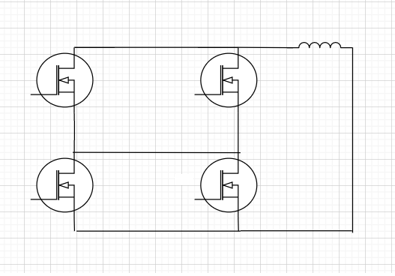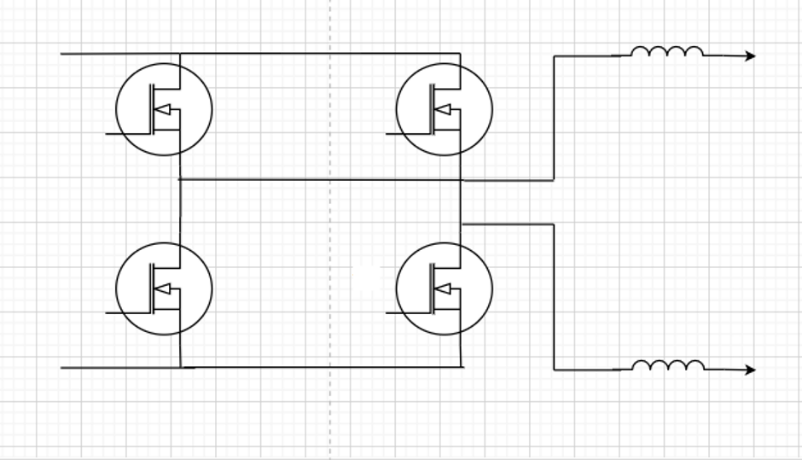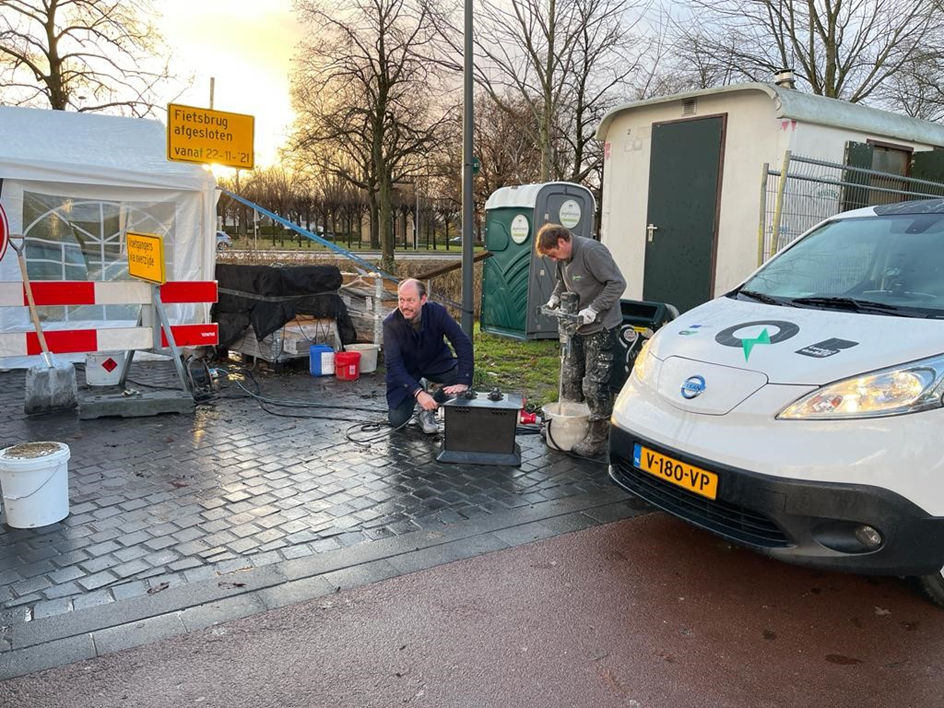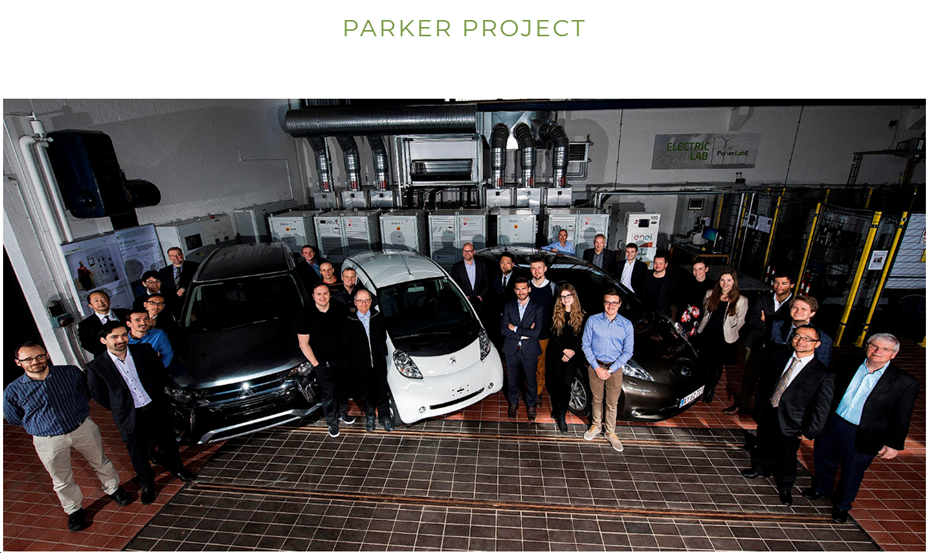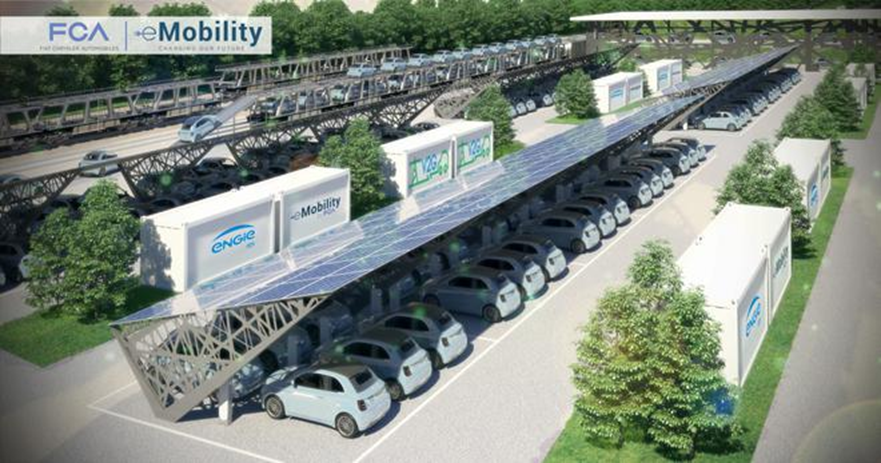1. Introduction
This article first introduces the history of V2G development and its necessity. V2G technology is becoming more and more crucial as electric car use increases. Because V2G technology may enhance the utility grid's operational effectiveness and stability by supporting reactive power, active power regulation, and the tracking of diverse renewable energy supplies, and by maintaining load balance through current harmonic filtering. V2G technology is a DC conversion and AC conversion through converters and inverters, so that electrical energy can flow between the grid and the car battery. For example, the recent rapid development of Tesla has vigorously developed electric vehicle projects, led the reform of electric vehicles, and significantly promoted the development and innovation of battery technology. There is also the AirQon project in the Netherlands, which effectively reduces environmental pollution and promotes the promotion and utilization of V2G technology through V2G technology. The principle and application of V2G are summarized, which lays a foundation for the further promotion of V2G technology.
2. Current status of V2G research at home and abroad
In recent years, benefiting from the rapid development of V2G technology, the power and automotive industries at home and abroad have made certain achievement in the construction of V2G project. According to the incomplete statistics of the V2G-HUB web, there are currently 107 V2G projects worldwide, including 73 in Europe, 20 in North America and 10 in Asia [1]. More than 80% of the projects are focusing on the feasibility analysis of V2G technology. Furthermore, projects in Europe and North America show that V2G technology is economically viable for responding to energy and electricity emergency incidents. Foreign governments attach importance to clean energy development. Based on this goal, they implemented the national strategy for low-carbon city development and vigorously support the V2G industry. On the one hand, foreign governments promoted the development of the V2G industry through formulating a target of green-oriented transition of energy. For example, U.S. Federal Energy Regulatory Commission have revised its policy to promote energy storage and energy platform operators to participate in the electricity market. Besides, government of California had introduced the ‘California Electric Vehicle Infrastructure Project’, guarantee the technical standards, ensure that V2G can successfully raise funds and attract more residents to drive electric vehicles. On the other hand, the governments increase financial appropriations and subsidies to generate the market demand of V2G. Countries like Japan and United Kingdom have allocated funds to support a number of V2G projects. They try to accelerate the commercialization of demonstration projects through the formulation of policies such as high subsidies and tax incentive. Compared with foreign countries, the development of V2G theology in China is limited by the degree of marketization of the electricity market. But there are also some results. At present, the domestic vehicle network projects are mainly concentrated in the field of orderly charging, mainly the battery swap mode led by car companies and coordinated charging mode led by power companies. There are two types of workstations in battery swap mode. Centralized charging station realizes large-scale centralized charging of batteries, stockpiling, charging and dispatching of a large number of batteries in the station [2]. Distribution station does not have charging function, but only serves as a place for users to get replacement battery service. Coordinated charging is the mode of using economic or technical measures to regulate the charging behaviour of electric vehicle users and the charging power of charging equipment according to the coordinated charging management system. That mode can realize the peak shaving and the valley filling of the load curve of the power grid. Also, it can reduce the construction of installed power generation capacity and ensure the common development of electric vehicles and the power grid [3].
3. V2G/G2V energy exchange fabric
At the heart of V2G is a DC/DC converter that works by achieving DC conversion and AC conversion through a full-bridge topology consisting of buck and boost choppers.
3.1. Analysis of the Full bridge converter topology
The use of a full-bridge topology can improve the performance of DC/DC converters. The topology needed to accomplish bidirectional power flow between the load and the power source is shown in the above image. When the grid has to take precision and tuning in different power flow directions into account, this structure might be employed. In some application modes, it may be more efficient to use a combination of DC conversion and AC conversion [4]. With a full-bridge structure, it is ideally possible to generate a positive and negative inter-peak waveform twice the input voltage. The transmission grid must have power factor calibration. Different strategies are required depending on the size and intensity of power factor adjustment. These methods include switching inductors and capacitors into the grid in order to rectify the power factor by using mechanical or electronic switches. The Full bridge converter is shown in figure 1.
|
Figure 1. Full-bridge converter. |
3.2. Analysis of AC-DC converter topology of G2V
The simplest structure of the PEV charging device is to use a one-way AC-DC converter. In the converter, there are four diodes and filters used to adjust the DC waveform and a single MOS-FET switch is used to control the frequency. If a bidirectional converter is to be formed, multiple MOSFET switches should be employed, as shown in the figure above [5]. In this structure, because the diode is removed, current can flow to the battery and can also flow out of the battery. If the battery voltage and the inter-grid voltage level are appropriate or similar, this structure can realize a single-stage conversion process. The AC/DC rectifier is shown in figure 2.
|
Figure 2. AC/DC converter. |
3.3. Analysis of DC-DC inverter topology of V2G
A classic inverter is a half-bridge rectifier consisting of a buck and chopper. One of the key features of a half-bridge rectifier is the bidirectional flow of power from power supply to load and from load to power supply [6]. This circuit has the ability to change the current from positive current crossing to negative current, even if it is always in a positive input voltage state. By plugging that circuit into a DC motor., single-quadrant control can be achieved. By modifying the switch's operating cycle, the engine speed control can be performed. In a half-bridge structure, an AC voltage of equal amplitude to the input voltage is ideally generated.
There are two main methods for converting direct current to alternating current – an inverter with a transformer and an inverter without a voltage changer. Both systems require a switch to convert DC to AC. Different types of output waveforms can be implemented based on different switches and switching structures. The simplest output waveform is a square wave with steep edges. When used in a transformer or power grid, the resulting output square wave is not ideal. Steep edges introduce harmonics into the fundamental wave, causing waveform distortion. Harmonics in the system may lead to degradation of efficiency and distortion of the carrier wave form. By introducing several MOSFET switches, as shown in the figure above, it is possible to obtain a modified or quasi-sinusoid sine wave, thus reducing the harmonic component [7]. To achieve a controllable bidirectional inverter, multiple switches are required to control the high/low power flow. To improve inverter efficiency, the switching duty cycle can be adjusted to create an instantaneous zone where no power is transmitted, creating the phenomenon of zero voltage switching. In order to produce a pure sine wave, an inductor and a capacitor with suitable capacity must be used to filter abrupt switching edges. The DC/DC rectifier is shown in figure 3.
|
Figure 3. DC/DC rectifier. |
4. V2G project case
Here are a few V2G practical projects in progress.
4.1. AirQon - Air Quality through EV Battery Connectivity
Breda is a dynamic festival town and has many broadcast hotspots because of it. Almost 200 events a year place particular environmental pressure on the city's air quality, as the events are mainly powered by diesel generators. An estimated 180 000 litres of diesel are used per year, emitting 0.6 tonnes of PM10 and 4.7 tonnes of NOx.
Larger festivals will have sufficient budgets to replace generators with more sustainable power, such as battery systems or fixed sockets in public spaces. But the main problem is that many small festivals do not have enough funds to achieve energy conservation and emission reduction goals, and this project is mainly responsible for helping this part of the activity to reduce pollution through the use of clean energy.
The way to attract car owners to the program is to set the rules: all car owners who participate in the program will receive a free parking space and a reduction in tickets. In addition, you can also receive a cold drink with your voucher. The expected results are follows:105 MWh of energy will be delivered by AirQon, 80.000 litres of diesel will be prevented, reducing 0.5 tonnes PM10, 10 ton CO2 and 3.8 tonnes NOx in emissions, 20% reduction of inhaled pollutants by visitors, working people at events and citizens living nearby, 50% of Breda events use AirQon by the year 2022, EUR 2,544, 876.12, which is the total ERDF budget granted will be saved [8]. The image of the project is shown in figure 4.
|
Figure 4. Image of the AirQon. |
4.2. Paker project
The Danish Parker Project is the world's first fully V2G commercial hub, covering multiple fleets, vehicles and regions. Building on two projects, EDISON and Nikola, the Parker project lays the foundation for understanding the potential of electric vehicles in supporting power systems. The project is to validate that electric vehicles can support the grid through vertical integration of resources, providing seamless support for the grid both locally and system-wide. Ensure that barriers to relevant markets, technologies and users are addressed, pave the way for further commercialization, and assess the ability of electric vehicles to meet the needs of the grid. Five Enel 10 kW DC charging piles, Nissan LEAF 20 kWh, Nissan E-NV200 24 kWh, Mitsubishi Outlander 12 kWh models participated in the project. The project examines the ability of electric vehicles to provide electricity to the power system, focusing on demonstrations of frequency regulation services that are not only in high demand, but also the most commercially meaningful service currently available in Denmark. The electric vehicle products used in the Parker project, along with the DC V2G charger, are currently technically capable of providing all the frequency regulation services currently in use in Denmark and are poised to deliver advanced services to the network. The second goal of the project is to develop a test protocol that targets the technical capabilities of electric vehicles and recharging infrastructure to sustain V2G services. CHAdeMO is currently the only standard that supports V2G, and in addition, the project has developed a test mode for evaluating the performance of the vehicles that are part of the project. Based on the tests, 7 different performance measures were assessed, including activation time, set point granularity, accuracy and accuracy. Tests have shown that the vehicles tested have good performance and can be used as a benchmark for automotive models and standards. The study also found that the possibilities for the development of distributed systems, mainly including congestion management, load transfer, peak shaving, and voltage control, have found that providing reactive power with high-efficiency chargers can minimize grid losses [9]. The image of the project is shown in figure 5.
|
Figure 5. image of the Parker Project. |
4.3. FCA project
In cooperation with technology partner ENGIE Eps and grid operator Terna, FCA has begun the first phase of a pilot project at the FCA plant in Mirafiore, Italy, with the aim of enabling two-way interaction between FCA's pure electric vehicles and the grid, which, in addition to charging the car, will also use the battery of the electric vehicle to stabilize the grid. Currently, the construction site for the first phase of the pilot project is now open at the Drosso logistics centre in the Mirafiori building, covering an area of about 3, 000 square meters, with 450 m trenches excavated and ready to accommodate more than 10 km of cables, which can interconnect the grid with 64 bidirectional fast charging points with an output of up to 50 kW. ENGIE Eps designed, patented and built a centralized infrastructure and advanced control system that provides vehicle-to-grid network services in addition to fast charging of electric vehicles. According to the plan, the first phase of the pilot project will be completed in July, and 32 V2G charging piles will be installed to connect 64 electric vehicles. By the end of 2021, the charging infrastructure will be expanded to install bidirectional charging systems for up to 700 electric vehicles, providing up to 25MW of regulatory capacity, making it the largest V2G facility ever recorded in the world [10]. At the same time, together with other FCA assets, FCA will build a huge virtual power plant with power output to provide power resource optimization for 8, 500 households and provide grid operators with a wide range of services, including ultrafast frequency regulation. The image of the project is shown in figure 6.
|
Figure 6. image of the FCA. |
5. Conclusion
This paper draws the following conclusions through the above research. First of all, V2G technology is a technology with great development potential, which can make great contributions in the field of energy conservation and emission reduction. In addition to this, in the V2G concept, electric vehicles not only absorb energy from the grid, but are also given the ability to feed energy back to the grid at all times when necessary and in accordance with grid directives. However, the current low V2G penetration rate and the reform of electric vehicles are still in their infancy, which restricts the promotion of V2G technology. The future development direction of V2G technology should be the application of mutual charging between electric vehicles and connecting to the grid.
References
[1]. Wu, Y., Zhang, J., Ravey, A., Chrenko, D., & Miraoui, A. (2020). Real-time energy management of photovoltaic-assisted electric vehicle charging station by markov decision process. Journal of Power Sources, 476, 228504.
[2]. Liu, Z., Zhang, Y., Zheng, W., Li, H., & Wu, G. (2021). Research on Distributed Power Quality Monitoring System of Large Centralized Charging Station. IOP Conference Series: Earth and Environmental Science, 772(1), 012025.
[3]. Zhou, K., Cheng, L., Wen, L., Lu, X., & Ding, T. (2020). A coordinated charging scheduling method for electric vehicles considering different charging demands. Energy, 213, 118882.
[4]. Chen, J., Wang, F., He, X., Liang, X., Huang, J., Zhang, S., & Wu, Y. (2022). Emission mitigation potential from coordinated charging schemes for future private electric vehicles. Applied Energy, 308, 118385.
[5]. Yao, Z., & Liu, T. (2021). Boost and full‐bridge integrated converter for wide input‐voltage range application. International Transactions on Electrical Energy Systems, 31(7).
[6]. Yi, W., Ma, H., Peng, S., Liu, D., Ali, Z. M., Dampage, U., & Hajjiah, A. (2022). Analysis and implementation of multi-port bidirectional converter for hybrid energy systems. Energy Reports, 8, 1538–1549.
[7]. Kiyotake, H., Okada, H., Ishizaka, K., & Itoh, R. (2002). Single-Switch Voltage-Doubler Rectifier Derived from Half-Bridge Configuration. IEEJ Transactions on Industry Applications, 122(9), 950–951.
[8]. Mbonane, S. H., & Srivastava, V. M. (2022). Comparative Parametric Analysis of Class-B Power Amplifier Using BJT, Single-Gate MOSFET, and Double-Gate MOSFET. Materials Science Forum, 1053, 137–142.
[9]. Maideen Abdhulkader Jeylani, A., Kanakaraj, J., Mahaboob Subahani, A., & Rameshkumar, K. (2018). Analysis of Solar PV Application Based on Bidirectional Inverter. MATEC Web of Conferences, 225, 04017.
[10]. Andersen, P. B., Toghroljerdi, S. H., Sousa, T., Soerensen, T. M., Noel, L., & Christensen, B. (2019). The Parker Project: Cross-Brand Service Testing Using V2G. World Electric Vehicle Journal, 10(4), 66.
Cite this article
Zheng,B. (2023). Analysis of V2G intelligent charge and discharge structures for electric vehicles. Theoretical and Natural Science,18,257-264.
Data availability
The datasets used and/or analyzed during the current study will be available from the authors upon reasonable request.
Disclaimer/Publisher's Note
The statements, opinions and data contained in all publications are solely those of the individual author(s) and contributor(s) and not of EWA Publishing and/or the editor(s). EWA Publishing and/or the editor(s) disclaim responsibility for any injury to people or property resulting from any ideas, methods, instructions or products referred to in the content.
About volume
Volume title: Proceedings of the 2nd International Conference on Computing Innovation and Applied Physics
© 2024 by the author(s). Licensee EWA Publishing, Oxford, UK. This article is an open access article distributed under the terms and
conditions of the Creative Commons Attribution (CC BY) license. Authors who
publish this series agree to the following terms:
1. Authors retain copyright and grant the series right of first publication with the work simultaneously licensed under a Creative Commons
Attribution License that allows others to share the work with an acknowledgment of the work's authorship and initial publication in this
series.
2. Authors are able to enter into separate, additional contractual arrangements for the non-exclusive distribution of the series's published
version of the work (e.g., post it to an institutional repository or publish it in a book), with an acknowledgment of its initial
publication in this series.
3. Authors are permitted and encouraged to post their work online (e.g., in institutional repositories or on their website) prior to and
during the submission process, as it can lead to productive exchanges, as well as earlier and greater citation of published work (See
Open access policy for details).
References
[1]. Wu, Y., Zhang, J., Ravey, A., Chrenko, D., & Miraoui, A. (2020). Real-time energy management of photovoltaic-assisted electric vehicle charging station by markov decision process. Journal of Power Sources, 476, 228504.
[2]. Liu, Z., Zhang, Y., Zheng, W., Li, H., & Wu, G. (2021). Research on Distributed Power Quality Monitoring System of Large Centralized Charging Station. IOP Conference Series: Earth and Environmental Science, 772(1), 012025.
[3]. Zhou, K., Cheng, L., Wen, L., Lu, X., & Ding, T. (2020). A coordinated charging scheduling method for electric vehicles considering different charging demands. Energy, 213, 118882.
[4]. Chen, J., Wang, F., He, X., Liang, X., Huang, J., Zhang, S., & Wu, Y. (2022). Emission mitigation potential from coordinated charging schemes for future private electric vehicles. Applied Energy, 308, 118385.
[5]. Yao, Z., & Liu, T. (2021). Boost and full‐bridge integrated converter for wide input‐voltage range application. International Transactions on Electrical Energy Systems, 31(7).
[6]. Yi, W., Ma, H., Peng, S., Liu, D., Ali, Z. M., Dampage, U., & Hajjiah, A. (2022). Analysis and implementation of multi-port bidirectional converter for hybrid energy systems. Energy Reports, 8, 1538–1549.
[7]. Kiyotake, H., Okada, H., Ishizaka, K., & Itoh, R. (2002). Single-Switch Voltage-Doubler Rectifier Derived from Half-Bridge Configuration. IEEJ Transactions on Industry Applications, 122(9), 950–951.
[8]. Mbonane, S. H., & Srivastava, V. M. (2022). Comparative Parametric Analysis of Class-B Power Amplifier Using BJT, Single-Gate MOSFET, and Double-Gate MOSFET. Materials Science Forum, 1053, 137–142.
[9]. Maideen Abdhulkader Jeylani, A., Kanakaraj, J., Mahaboob Subahani, A., & Rameshkumar, K. (2018). Analysis of Solar PV Application Based on Bidirectional Inverter. MATEC Web of Conferences, 225, 04017.
[10]. Andersen, P. B., Toghroljerdi, S. H., Sousa, T., Soerensen, T. M., Noel, L., & Christensen, B. (2019). The Parker Project: Cross-Brand Service Testing Using V2G. World Electric Vehicle Journal, 10(4), 66.











